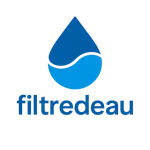Clean, safe drinking water remains a pressing concern for many Moroccan households. As municipal supply quality varies across regions, more families are turning to Water filter in Morocco to protect their health — but a lot of myths make it hard to choose the right option.
Not all water filtration systems perform the same way. This guide cuts through common misconceptions and explains what actually matters when selecting a Water filter in Morocco, from technology to maintenance.
Water filter in Morocco
What you’ll learn in this article:
- Why tap water safety is a local issue and how to verify it
- The five most common myths about water filters — and the facts behind them
- How to match filtration technology to your household’s needs
- Simple maintenance steps to keep filtered water safe
- Practical next steps: test your water and compare treatment options
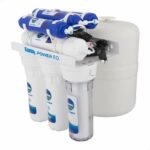
Water filter in Morocco
The Reality of Water Quality in Morocco
Water quality in Morocco is a multifaceted issue that affects households nationwide. Limited treatment capacity in some regions, aging infrastructure, and variable source quality mean access to consistently safe tap water remains a challenge.
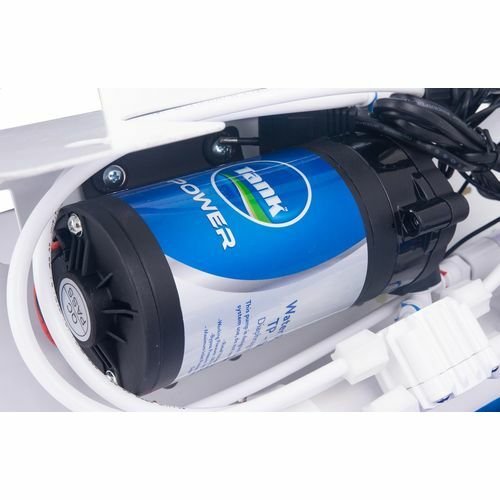
Current Water Safety Challenges Across the Country
Morocco faces several water safety challenges, including contamination from agricultural runoff and inadequate water treatment infrastructure. Regional studies and WHO summaries note elevated levels of nitrates and localized microbial contamination in parts of the country, underscoring gaps in centralized treatment and the need for point-of-use solutions and improved water treatment Morocco programs.
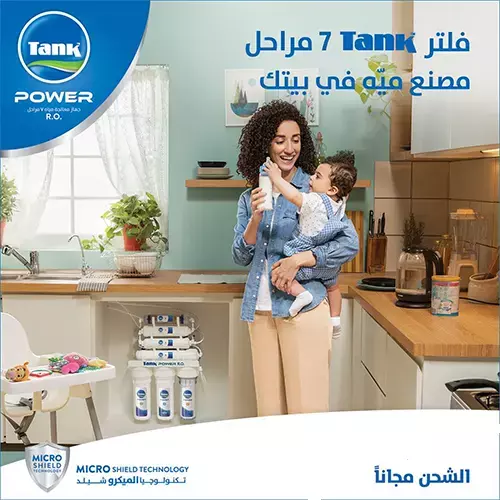
Why More Families Are Questioning Their Tap Water
As awareness of local contamination risks grows, more families are questioning the safety of their tap water and exploring household treatment options. The combination of visible issues (taste, odor) and reports of occasional contamination has driven interest in domestic water treatment and filtration.
As one resident put it,
I’m worried about the health impacts of drinking tap water; that’s why I’ve installed a water filter at home.
This reaction is common in areas where municipal systems struggle to treat source water; testing your supply and considering appropriate treatment can help address both safety and confidence in drinking water.
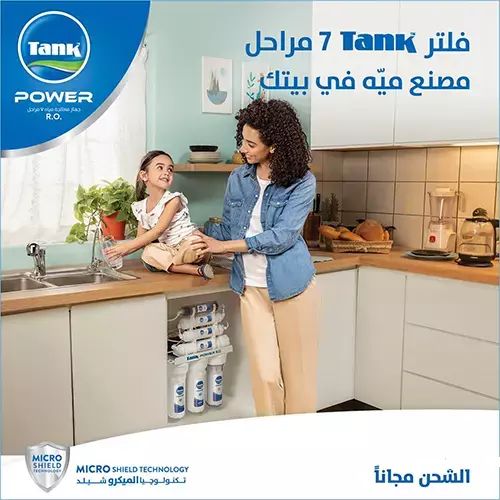
Don’t Let Misinformation Cloud Your Judgment
Don’t let myths or marketing blur the facts when choosing a water system. In Morocco, water quality varies by region, so making informed, evidence-based choices about filtration is essential to protect your family’s health and ensure reliable drinking water.
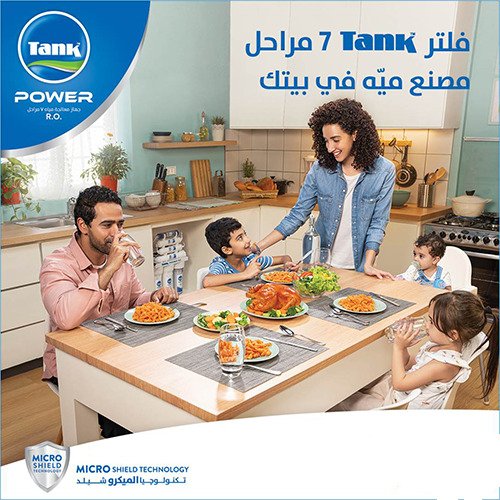
The Importance of Fact-Based Decisions for Your Family’s Health
Choose a treatment based on tested needs, not on headlines. A reverse osmosis system can be highly effective for reducing dissolved solids, heavy metals and many chemical contaminants, while activated carbon and UV address chlorine, taste/odor and microbes respectively. Start by testing your tap water (TDS, bacteriology and specific chemicals) to identify the right solution.
| Filtration MethodEffectivenessHealth Benefits | ||
| Reverse Osmosis | High (reduces TDS, heavy metals) | Removes a broad range of contaminants; useful when water shows high dissolved solids |
| Activated Carbon | Medium (adsorbs organics, chlorine) | Improves taste and odor; removes many chemical compounds but not dissolved salts |
| UV Treatment | High (microbial) | Kills bacteria and viruses; pairs well with filtration that removes particulates |
How Misconceptions Can Lead to Poor Water Quality Choices
Assuming all filters perform the same can leave key contaminants untreated. Before you buy, check specs such as micron rating, TDS reduction percentage, and certified contaminant removal lists. Match the technology to the contaminants your water test reveals and consider combined solutions (for example: sediment + carbon + RO + remineralization).
To find the right water filter in Morocco, follow a simple plan: test your water → identify target contaminants → compare verified performance data → choose an installation and maintenance plan. If you need help, look for local water treatment solutions providers who can test and recommend systems suited to your supply.
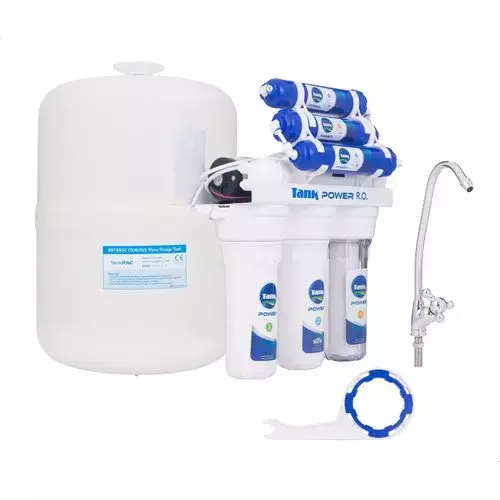
Understanding Water Filter Technology in Morocco
As concerns about source quality and distribution grow, Moroccan households are increasingly choosing point-of-use systems that match local needs. Modern water treatment and filtration technology now offers several proven approaches — each suited to different contaminants and situations.
The technology behind contemporary water filters has advanced: options include media-based filters, activated carbon, ultraviolet disinfection, ultrafiltration, and reverse osmosis (RO). RO and related are widely used where dissolved solids, heavy metals or industrial pollutants are a concern because of their broad contaminant removal profile.
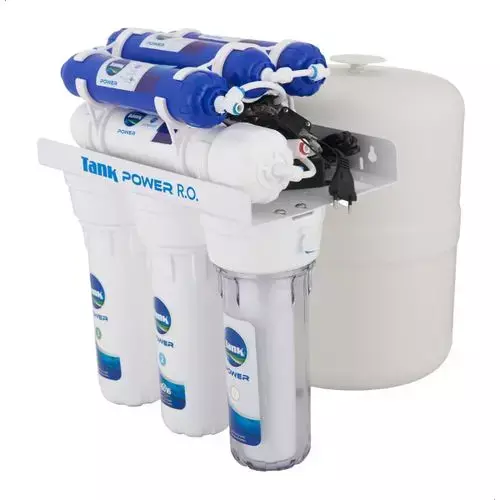
Modern Filtration Methods Available Today
The market offers a mix of single-stage and multi-stage systems. Typical methods and their primary targets include:
| Filtration MethodKey Benefits | |
| Activated Carbon | Improves taste and odor, removes chlorine and many organic compounds |
| Ultraviolet (UV) Light | Kills bacteria and viruses; ideal for microbial contamination |
| Reverse Osmosis (RO) | Reduces dissolved solids, heavy metals and a wide range of chemical pollutants |
How Advanced Reverse Osmosis Systems Work
Advanced reverse osmosis systems force water through a semi-permeable membrane that blocks dissolved salts, many organics and contaminants while producing low-TDS permeate. Because RO works at the molecular level it is effective where other methods fall short — for example, in treating brackish water or reducing high total dissolved solids.
When evaluating options, check technical specs such as TDS reduction percentage, micron rating, daily output (L/day) and whether a system includes pre-filters (sediment/media), activated carbon, UV or remineralization stages. Combining methods (e.g., sediment → carbon → RO → remineralization) often delivers the widest coverage and the best taste.
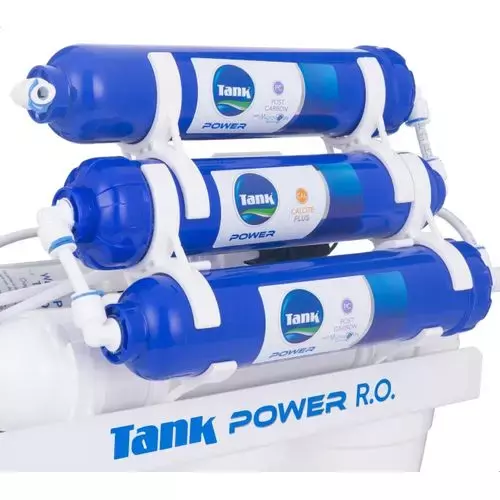
Myth1: “Boiling Water is Just as Good as Using a Filter”
Boiling is a time-honored way to kill pathogens, but it is not a complete substitute for modern filtration. Understanding what boiling does—and does not—remove will help you choose the correct water treatment for your home.

What Boiling Actually Removes (and What It Doesn’t)
Boiling reliably inactivates many biological contaminants, including bacteria and viruses, making water microbiologically safer. However, boiling does not remove chemical contaminants, dissolved salts, heavy metals or particulate matter. Substances such as nitrates, fluoride, lead and many pesticides remain in water after boiling and can pose long-term health risks, so boiling alone is insufficient when those contaminants are present.
The Scientific Advantage of Modern Filtration Systems
Modern reverse osmosis and multi-stage filtration systems provide broader removal of contaminants that boiling cannot address. RO and combined treatment systems can substantially reduce dissolved solids, heavy metals and many chemical pollutants, delivering safer, better-tasting water. When selecting a system, look for verified removal rates for the specific contaminants in your water.
Contaminants That Survive Boiling
Certain contaminants are not affected by boiling. These commonly include:
- Nitrates
- Heavy metals such as lead and mercury
- Chemical pollutants like pesticides and herbicides
- Dissolved solids and fine particulate matter
Long-Term Cost Comparison: Boiling vs. Filtering
Boiling repeatedly also carries ongoing energy costs (fuel or electricity) and time. A point-of-use filter or purifier is an upfront investment in a long-term water treatment solution that often reduces lifetime cost and improves convenience. In Morocco, entry-level water purifiers typically start in the low hundreds of MAD, while higher-capacity or RO systems may cost more but deliver broader protection and lower operating cost over time.
If your water test shows chemical contaminants or high TDS, prefer a filtration-based treatment solution over boiling. For best results, test your water first, then choose a system with verified performance against the contaminants you need removed.
Myth2: “All Water Filters in Morocco Are Basically the Same”
Thinking every filter offers identical protection is a risky assumption. In Morocco, available systems vary widely in technology, performance and the contaminants they address — so picking the wrong one can leave dangerous pollutants untreated.
The Critical Differences Between Filter Types
Filters differ by mechanism and target contaminants. Basic carbon filters are excellent for removing chlorine, improving taste and adsorbing many organic compounds, but they do not reduce dissolved salts or most heavy metals. By contrast, reverse osmosis systems remove dissolved solids and many inorganic contaminants; ultrafiltration and media water filters target particulates and some microbes.
Basic Carbon Filters vs. Multi-Stage Systems
Single-stage carbon units are simple and inexpensive but limited in scope. Multi-stage systems combine sediment/media pre-filters, activated carbon, and often an RO membrane (and sometimes UV or remineralization). This layered approach reduces a much wider set of contaminants and improves overall water quality and taste.
Why Advanced Systems Often Outperform Basic Options
Advanced multi-stage systems typically deliver higher overall contaminant removal because each stage targets different impurities. For example, a configuration that pairs sediment → carbon → RO can remove particulates, organic chemicals and dissolved solids respectively. Look for verified performance data rather than marketing claims — check micron rating, certified contaminant removal lists and TDS reduction percentages when comparing models.
Filtration Effectiveness Measurements
Useful specs to compare filters include:
- Micron rating — the particle size a filter removes (lower = finer filtration)
- Contaminant removal percentage — usually listed per contaminant (e.g., lead, arsenic)
- TDS reduction percentage — relevant for dissolved salts and brackish water
Before buying, test your water (TDS + targeted contaminant tests) and match the results to a system designed to treat those issues. That way you know whether a basic carbon unit is sufficient or whether you need a multi-stage or reverse osmosis solution.
Myth3: “Water Filters Remove Healthy, Essential Minerals”
Many people worry that filtration—especially reverse osmosis—strips drinking water of beneficial minerals. The reality is more nuanced: while some minerals can be reduced, modern systems and dietary sources mean filtered water does not necessarily leave you mineral-deficient.
The Mineral Content Truth in Filtered Water
RO membranes reduce dissolved minerals because they remove a wide range of dissolved solids. Typical RO systems can lower Total Dissolved Solids (TDS) substantially (often 80–98% depending on membrane and feed water). However, the exact mineral reduction varies by system and feed-water chemistry, so check the TDS reduction percentage or lab results for the model you consider.
How Modern RO Systems Address the Mineral Balance
Manufacturers address mineral concerns in two main ways: by designing systems that retain some minerals in pre- or post-treatment stages, or by adding a remineralization stage that reintroduces calcium and magnesium to improve taste and raise alkalinity. This produces reverse osmosis water that is both low in contaminants and more palatable.
Mineral Remineralization Technology in Advanced Filters
Remineralization cartridges typically contain mineral media that dissolve small amounts of minerals back into the permeate. When present, these stages are intended to restore a balanced taste and modest mineral content—not to replace dietary sources of nutrients.
Dietary Mineral Sources Beyond Drinking Water
Drinking water is only one contributor to mineral intake. Most people obtain the bulk of essential minerals like calcium and magnesium from food (dairy, leafy greens, nuts, whole grains). If you are concerned about your mineral intake, consult a nutritionist rather than relying on drinking water as a primary source.
Bottom line: filtered water can have reduced mineral content, but modern water treatment options (including remineralization) and a balanced diet ensure that filtered water remains a safe, healthy choice.
- RO systems can significantly reduce TDS; check the model’s TDS reduction percentage.
- Remineralization stages can improve taste and replace small amounts of minerals.
- Diet is the primary source of essential minerals—use food and, if needed, supplements to meet requirements.
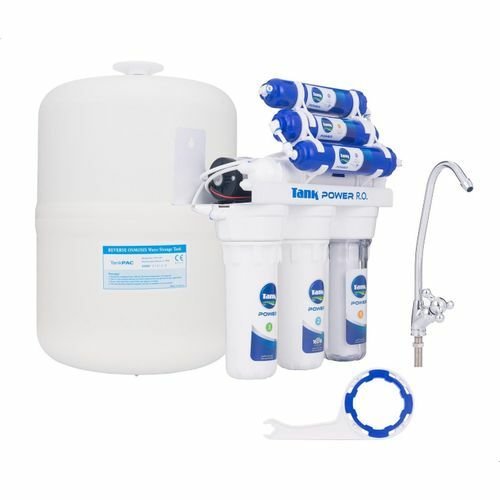
Myth4: “Installing a Good Water Filter is Expensive and Complicated”
The idea that a reliable water filter is prohibitively expensive or hard to install is common — but often misleading. While there is an upfront cost, a properly chosen home filtration system typically pays back over time through reduced bottled-water purchases and lower hassle, and many systems are straightforward to install.
The Real Cost Analysis: Bottled Water vs. Home Filtration
Compare lifetime costs rather than sticker prices. Bottled water adds ongoing monthly expenses and plastic waste; a point-of-use purifier is an upfront investment that lowers long-term water consumption costs. For Morocco, local entry-level water purifiers can start in the low hundreds of MAD and RO-equipped or higher-capacity systems cost more but reduce ongoing buying and disposal costs.
| ExpenseBottled Water (example)Home Filtration (example) | ||
| Initial Cost | Ongoing purchases | One-time purchase (varies by model) |
| Monthly Cost | Recurring (bottles) | Filter replacements / low operating cost |
| Annual Cost | Depends on consumption | Replacement filters + occasional service |
Simple Installation Process for Typical Point-of-Use Systems
Many modern units are designed for easy installation: basic under-sink or counter-top systems can often be installed by a handy homeowner in less than an hour. Reverse osmosis systems are slightly more involved (storage tank, drain connection) but come with clear manuals and optional professional installation if you prefer.
Long-Term Savings Calculator
Use a simple formula to estimate savings: (monthly bottled-water spend × 12 × years) − (system price + total maintenance over years) = estimated savings. Plugging local costs will show whether a filter pays off for your household given your bottled-water consumption.
- Estimate current monthly bottled-water spending and consumption.
- Compare that to the system price plus annual maintenance (filter replacements).
- Check expected payback period in years — many households break even within 1–3 years.
Installation Support and Financing Options
If installation or upfront cost is a concern, look for local suppliers offering installation services, maintenance plans, or financing/rental options. Reputable water treatment solutions providers often include installation and after-sales support, making the switch easier and ensuring optimal long-term performance.

Myth5: “Filtered Water Tastes ‘Dead’ or ‘Flat'”
Many people worry that filtration strips water of its character, leaving it tasting “dead” or flat. In fact, taste is driven by mineral content and impurities; removing unpleasant contaminants typically makes water taste cleaner, and modern systems can restore a pleasant mouthfeel where needed.
The Science Behind Water Taste
Water flavor depends on dissolved minerals (calcium, magnesium), hardness, and any dissolved chemicals or metals that cause off-flavors (for example, chlorine or iron). Unfiltered tap water may taste metallic, chlorinated, or musty when these contaminants are present. Effective water treatment removes those contributors to bad taste, often resulting in fresher-tasting water.

Taste Test Results: Filtered vs. Unfiltered Water
Consumer taste tests and surveys generally find a preference for filtered water, especially where tap supplies have noticeable chlorine, organics or metallic tastes. For objective comparison, pair a blind taste test with simple metrics like TDS and key mineral concentrations to understand why one sample is preferred.
How Remineralization Improves Taste Profile
Some advanced filtration systems add a remineralization stage after low-TDS treatments like RO. This stage reintroduces small amounts of calcium and magnesium to improve mouthfeel and balance acidity, producing reverse osmosis water that tastes more natural without sacrificing safety.
Customer Feedback on Filtered Water Taste
Many users report that filtered water tastes fresher and cleaner, with fewer off-flavors. If you find filtered water too flat, try a system with a remineralization stage or compare TDS levels — moderate mineral content often correlates with preferred taste. Also consider local hardness: water that is too soft or too hard can both affect flavor.
Water Filter in Morocco: Market Overview and Options
Morocco’s market for home water treatment is expanding as more consumers seek reliable ways to improve drinking water quality. Retail selection now includes basic point-of-use filters up to multi-stage systems, giving households a wide range of options depending on local water chemistry and needs.
Popular Brands and Models Available Locally
The Moroccan market carries both local and international brands across different price points and technologies. Commonly available options include:
- Water Filter7Plus RO (example multi-stage RO systems)
- Aquasure (entry-level carbon and mixed-media units)
- PURE (UV and hybrid systems)
- Other international brands and regional distributors
These vendors supply models that incorporate reverse osmosis, activated carbon, UV purification and media water filters. When choosing, check local dealer networks and warranty/support availability to ensure long-term service.
| BrandModelTechnologyPrice (MAD) | |||
| Water Filter7Plus | RO | Reverse Osmosis | 2500 |
| Aquasure | AS-100 | Activated Carbon | 800 |
| PURE | PURE-UV | UV Purification | 1200 |
Importing vs. Buying Locally: Pros and Cons
Buying locally often means easier access to spare parts, quicker service and clearer warranty support — important when planning maintenance. Importing may expand your choices (specialized reverse osmosis systems or desalination-capable units for brackish water), but expect added shipping, customs, and potential complications with after-sales service.
For specialized needs — for example, treating brackish water or considering small-scale desalination or ultrafiltration systems — consult local water treatment Morocco suppliers who can advise on compatibility, installation and whether imported equipment is worth the extra cost.
The Water Filter7Plus RO: A Comprehensive Review
To address common household water issues in Morocco, many consumers consider multi-stage reverse osmosis solutions. The Water Filter7Plus RO is presented as a point-of-use option that combines several filtration stages to tackle a wide range of contaminants.
Technical Specifications and Features
The system is described as a multi-stage unit designed for high-capacity household use. Manufacturer-reported features typically include:
- Sediment and media pre-filters to protect downstream components
- Activated carbon stages for chlorine and organic compounds
- Reverse osmosis membrane for dissolved solids and inorganic contaminants
- Optional remineralization stage to improve taste and restore modest mineral content
- Removable/washable pre-filters for easier maintenance
These elements are common in advanced reverse osmosis systems and help explain why RO-based units are chosen where feed water has high TDS or specific inorganic contaminants.
Performance Analysis and Testing Results
Performance claims for household RO units often include substantial reductions in TDS and high removal percentages for specific contaminants. Where available, rely on independent lab or certification documents to confirm performance metrics.
Filtration Efficiency Metrics
Manufacturer information commonly cites high contaminant removal rates (for specified contaminants). To evaluate any RO system, check verified values for:
- TDS reduction percentage (gives a quick sense of dissolved solids removal)
- Specific contaminant removal rates (e.g., lead, arsenic, nitrate)
- Membrane lifespan and recommended replacement intervals
Water Output Quality Measurements
Independent testing typically reports lowered TDS, improved taste, and reduced microbial and chemical contaminants when systems are correctly installed and maintained. Confirm reported flow rate (L/day), expected reject/permeate ratio, and post-treatment (remineralization) details to ensure the unit fits your household needs.
In summary, the Water Filter7Plus RO appears to follow standard multi-stage RO design principles. Before purchase, request documented test results or certifications and compare them with other reverse osmosis and water treatment systems to match technical performance to your water quality needs and local feed-water conditions.
Health Benefits of Using Quality Water Filters
Using a reliable point-of-use system can deliver measurable health benefits for Moroccan households. As concerns about tap water grow, targeted water treatment helps reduce exposure to harmful contaminants and supports overall wellbeing.
Contaminants Commonly Found in Moroccan Tap Water
Tap water in some areas can contain contaminants such as heavy metals, bacteria, and viruses. These can cause acute illnesses (gastrointestinal infections) and, in some cases, long-term health risks if exposure is chronic. For authoritative guidance, consult the World Health Organization and local public-health reports to see which contaminants are most relevant in your region before choosing treatment.
- Heavy metals (lead, mercury) — linked to neurological and developmental risks
- Bacteria such as E. coli — cause acute gastrointestinal illness
- Viruses and protozoa — can produce waterborne disease outbreaks
Reported Health Improvements from Filter Users
Households that adopt appropriate filtration often report fewer episodes of stomach illness, better hydration from improved-tasting water, and lower reliance on bottled water. Where available, look for local studies or customer water-quality reports that quantify improvements (for example, reductions in E. coli detection or lowered TDS after installation).
To maximize health benefits: test your water to identify contaminants, select a treatment proven to remove those contaminants (e.g., RO for high TDS/heavy metals, UV for microbial contamination), and keep up with recommended maintenance. Customer testimonials and independent post-installation tests can help verify real-world outcomes.
Environmental Impact of Home Water Filtration
Switching from bottled water to a home filtration system reduces both plastic waste and the carbon emissions linked to production and transport. In Morocco, where bottled-water consumption remains common in many households, point-of-use filtration can be a practical step toward lower environmental impact.
Reducing Plastic Waste from Bottled Water
One immediate benefit of using a home water filter is fewer single-use bottles. Replacing even a portion of household bottled-water purchases with filtered tap water can cut annual plastic bottle use substantially — reducing landfill and marine plastic pollution. Also consider recycling and responsible disposal of spent filter cartridges to minimize lifecycle impacts.
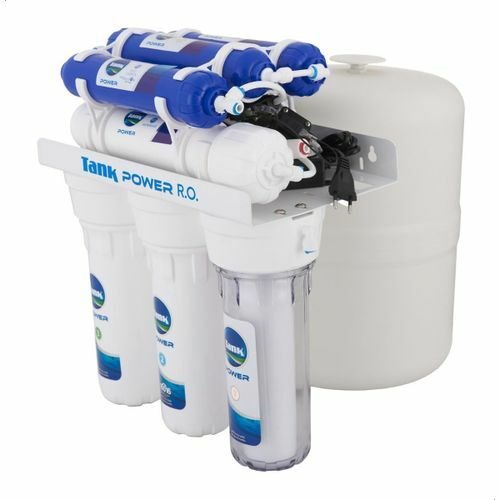
Carbon Footprint Comparison: Bottled vs. Filtered Water
Life-cycle analyses generally show bottled water carries a higher carbon footprint per liter than filtered tap water because of bottling, packaging and transport. Exact numbers vary by study and region, but the relative difference is clear: treating water at home (point-of-use filtration) typically uses far less energy per liter than producing and shipping bottled water. For large-scale needs (for example treating brackish or seawater), consider centralized desalination or community-scale treatment, which have different energy and footprint profiles than household filters.
| Water SourceTypical Carbon Footprint (kg CO2 per liter) | |
| Bottled Water | Higher — varies by packaging and transport |
| Filtered Tap Water | Lower — typically a small fraction of bottled water’s footprint |
Choosing a home filtration system reduces household plastic consumption and usually lowers per-liter carbon emissions. For regional planning or larger supplies (brackish water, seawater desalination), consult local water-resources experts to compare centralized treatment options and their environmental trade-offs. Also ask suppliers about recyclable filter media and end-of-life disposal to further reduce environmental impact.
Maintenance Requirements for the Water Filter7Plus RO
Regular maintenance keeps any multi-stage system performing well and protects water quality. The Water Filter7Plus RO requires routine care—simple tasks that most homeowners can perform—or you can opt for a maintenance plan from an authorized service provider.
Filter Replacement Schedule and Costs
Typical replacement guidance for RO-based point-of-use systems (manufacturer recommendations may vary):
- Pre-filters (sediment/media, carbon): replace every 6–12 months
- RO membrane: replace every 2–3 years depending on feed-water quality and usage
- Post-filters/remineralization cartridges: replace annually or per manufacturer guidance
Replacement costs depend on part type and supplier. As a rough local guideline, annual maintenance (filters only) can be modest compared with ongoing bottled-water spending — confirm exact prices and SKU/part numbers with your dealer so you can budget accurately.
Manufacturer guidance: “Regular filter replacement is essential to prevent contamination and maintain water quality.” Many suppliers offer maintenance packages or subscription plans that include filter shipments and service visits, which simplify upkeep and extend system life.
Troubleshooting Common Issues
Common, user-resolvable issues include reduced flow, unusual tastes, or odd odors. Quick checks you can perform:
- Verify water supply and pressure to the unit
- Inspect and, if needed, replace clogged pre-filters
- Sanitize the system and replace carbon stages if tastes persist
If simple fixes don’t help, consult the user manual or contact an authorized technician to avoid damaging the system or voiding the warranty.
Recommended Maintenance Tools
Basic tools for routine care: filter wrench, replacement cartridges (keep part numbers handy), a soft cleaning cloth, and a mild sanitizing solution if instructed by the manual. Most parts and tools are available from the manufacturer or local authorized dealers.
When to Call a Professional
Call a certified technician for leaks, electrical issues, persistent water-quality problems, or when replacing the membrane if you prefer not to handle that service. Using authorized service preserves warranty coverage and benefits from the supplier’s years experience maintaining similar systems.
Follow the recommended filter replacement schedule, keep a simple maintenance log (date of filter changes, installed part numbers), and consider a service subscription to ensure the Water Filter7Plus RO continues delivering clean, safe water for years to come.

Real Customer Experiences in Morocco
Real-world results are the best proof of a system’s value. Across Morocco, households and institutions that have matched filtration technology to their local water issues report measurable improvements in water quality and user satisfaction.
Success Stories from Different Regions
Here are anonymized, representative examples based on customer reports and follow-up testing:
- Household, Rabat (anonymized): After an initial water assessment showed elevated TDS and detectable trace metals, the family installed a multi-stage unit with RO. Follow-up testing showed a large drop in TDS and non-detectable levels of the targeted metals; the household reported fewer stomach complaints.
- Primary school, Fez (anonymized): The school switched to point-of-use filtration to address microbial concerns. Subsequent monitoring found reduced bacterial counts in drinking taps and teachers reported fewer student absences due to gastrointestinal illness.
Common reported benefits include:
- Improved health: fewer waterborne illnesses reported by families and institutions
- Better taste: cleaner, fresher-tasting water leading to higher on-site water consumption and less bottled-water use
- Cost-effective: savings on bottled water and associated logistics over time
Before and After Water Quality Reports
A standard process our customers follow is:
- Initial water quality assessment (TDS, microbiology, targeted chemical tests)
- Installation of the chosen water treatment system
- Follow-up testing to confirm contaminant reductions and improved water quality
When available, ask suppliers for anonymized before-and-after test summaries or independent lab reports so you can verify outcomes in settings similar to yours. If you’d like to review detailed case studies or request a local demo, contact a certified provider to arrange testing and an on-site evaluation.
Selecting the Right Water Filter for Your Moroccan Home
The search for the ideal Water filter in Morocco starts with assessing your household’s specific needs and budget. Different homes require different capacities and technologies — matching those needs to the right product prevents wasted expense and ensures safe drinking water.
Assessing Your Household’s Specific Needs
To choose the best water filter for home use, follow a quick diagnostic: test your water, identify the contaminants, then select a technology that targets those issues. Consider household size, daily consumption and whether your source has high TDS, microbial risk, or chemical contaminants.
Water quality tests (TDS, microbiology and targeted chemical screens) are the most reliable way to determine which treatment systems meet your requirements.
| Household SizeRecommended Filter CapacityTypical Water Purifier Price | ||
| 1-3 people | 100–200 L/day | 800–1,200 MAD (entry to mid range) |
| 4-6 people | 200–400 L/day | 1,500–2,500 MAD (mid to higher range) |
Budget Considerations and Financing Options
When comparing models, calculate total cost of ownership: purchase price + expected filter replacements + occasional service. Some suppliers offer financing, rental plans or maintenance subscriptions to spread upfront costs and ensure regular upkeep. Use a simple formula to estimate payback: (monthly bottled-water spend × 12 × years) − (system price + maintenance over years) = estimated savings.
Finally, review the supplier’s service network and warranty so your chosen water treatment systems will be supported locally. If you need help, contact an authorized dealer to arrange a local water test and recommendations for systems that meet your household’s specific needs.
Conclusion: The Clear Choice for Your Family’s Health
Choosing the right Water filter in Morocco matters: the correct technology protects your family from local contaminants and reduces reliance on bottled water. Throughout this guide we’ve debunked common myths and shown how to match a system to your needs.
Understand your source water, pick a proven water treatment solution that targets the contaminants you found in testing, and follow a regular maintenance schedule. Manufacturer claims (for example about mineral balance or removal percentages) should be verified with independent test results or certifications before purchase.
Investing in an appropriate filter is also an environmental choice: it cuts plastic waste and lowers per-liter carbon impact compared with bottled water. To move forward with confidence, follow this simple checklist:
- Test your tap water (TDS, microbiology, targeted chemicals)
- Match contaminants to the right technology (RO, carbon, UV, media)
- Compare verified performance, capacity and total cost of ownership
- Confirm local service, warranty and replacement part availability
Ready to act? Test your water, compare local water treatment solutions, and contact an authorized supplier or certified installer to get a tailored recommendation. Many customers report a clear improvement in taste, health outcomes and cost savings when their system is properly selected and maintained — a practical, evidence-backed step toward safer daily water.
FAQ
Are water filters in Morocco effective against tap water contaminants?
Yes—modern point-of-use filters, particularly those that include reverse osmosis or combined multi-stage treatment, are effective against many common tap-water contaminants when properly selected and maintained. RO systems and certified filtration units can reduce heavy metals, many chemical pollutants and, with the right combination (e.g., sediment + carbon + UV), microbial risks. Look for independent test reports or certifications that list specific contaminants and removal percentages.
How often should I replace the filters in my water filtration system?
Replacement frequency depends on filter type and local water quality. A common schedule is: pre-filters (sediment/media/carbon) every 6–12 months, post-filters annually, and RO membranes every 2–3 years. Check manufacturer guidance and track your system’s performance (flow rate, taste, TDS) to adjust intervals. Many suppliers offer replacement plans to simplify upkeep.
Do water filters remove essential minerals from drinking water?
Some systems—especially RO—reduce dissolved minerals (TDS). However, many modern units include a remineralization stage or design choices that retain beneficial minerals in the final water. If maintaining mineral content is a priority, choose a system that documents its remineralization performance or opt for a post-treatment mineral cartridge.
Can I install a water filter myself, or do I need professional help?
Many point-of-use systems are designed for homeowner installation and include clear instructions. Simple countertop or under-sink units can often be installed in under an hour. More complex water treatment systems (e.g., RO with tank and drain) may require basic plumbing work; if you’re unsure, use professional installation to ensure correct setup and preserve warranty coverage.
Are filtered water systems more cost-effective than buying bottled water?
Generally yes. A filtered system has an upfront cost plus periodic filter replacements, but it typically becomes less expensive than continuous bottled-water purchases over time. Use a simple payback calculation (monthly bottled-water spend × 12 × years minus system and maintenance costs) to estimate savings for your household.
How do I know if a water filter is compatible with my home’s plumbing?
Check the product specifications for inlet/outlet connections, required water pressure and installation space. Most manufacturers (or local suppliers) provide compatibility guides; if in doubt, ask an installer or your supplier for a pre-purchase assessment. Manufacturer-reported compatibility is helpful, but confirm with a local technician when plumbing is non-standard.
Can a water filter improve the taste of tap water?
Yes. Filters that remove chlorine, iron, sulfur compounds and organic contaminants (activated carbon, sediment, and RO with proper post-treatment) typically improve taste and odor. If filtered water tastes too flat, consider a system with a remineralization stage to restore a more natural mouthfeel.
What is the environmental impact of using a water filter versus bottled water?
Using a home filter usually lowers plastic waste and reduces per-liter carbon emissions compared with bottled water, since it eliminates bottling and transport. Exact impacts depend on use patterns and whether filters and cartridges are recycled; consider suppliers that offer recyclable media or take-back programs to minimize lifecycle footprint.
How do I test my water and read the results?
Start with a basic TDS test (gives a quick sense of dissolved solids) and a microbiological test if you suspect contamination. For specific chemicals (nitrates, lead, pesticides) use a certified lab. When reading results: compare values to WHO guidelines or local standards, then choose systems whose certified removal lists target the contaminants you found.
